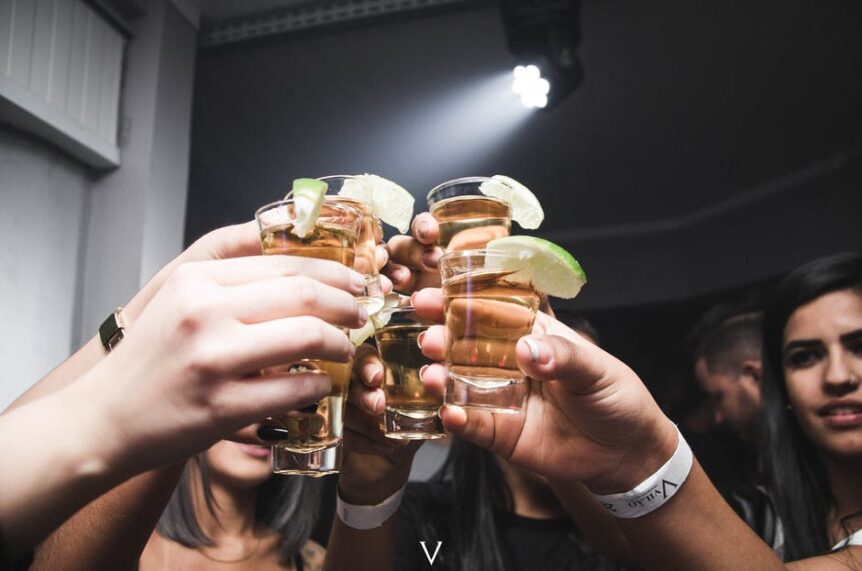
Tequila 101: How its Made and The Different Types
While you’re probably familiar with that classic margarita, the cheap tequila you drank in college, and maybe tequila-induced hangovers, this drink is so much more.
Tequila, like most spirits, is an art form. And you’d be surprised about how much goes into its production method. But that’s what today’s lesson is for.
Welcome to tequila 101! Today, you’ll be learning what it is, how it’s made and all the different kinds there are for you to enjoy.
Tequila 101
So what exactly is tequila and where does it come from?
Tequila must be made from the blue Weber agave plant, but the percentage of agave can range anywhere from 51% to 100%. The less agave present, the more sugar there is. These types of blends are known as “mixtos” and are not highly revered.
So for the real deal, you want to get a tequila with 100% agave content.
In terms of alcohol content, it usually ranges anywhere from 35% to 55%. And to be sold in the United States, it needs to be at least 40% alcohol content.
Mexico is actually the only country allowed to produce this spirit. To be legally considered tequila, it needs to come from Jalisco, Nayarit, Guanajuato, Tamaulipas, or Michoacán. Although, most tequila comes from Jalisco.
The specific soil in which the plant grows will also determine the flavor profile the tequila will have. The lowlands or “valley” of Jalisco tends to produce agave with herbal flavors, while the highlands produce agave with spicier flavors.
How It’s Made
Tequila production is an ancient art form.
Thousands of years ago, the Aztecs used the agave plant to make a fermented drink they worshipped known as pulque. Today, tequila is still worshipped by some. Just made a little differently.
After ripening for 8 to 12 years, the blue agave plant is ready to harvest. For this laborious work, farmers take out the heart of the plant (the piña) and roast it in a brick oven anywhere from 24 to 48 hours. Another, more modern method of cooking is through a diffuser, where they cut the plant and only cook the liquid.
After cooking, the agave becomes edible. The juice is extracted with a tahona, (or stone wheel) fermented, and then distilled.
During fermentation, the sugars transform into alcohol, which takes between 7 and 12 days. The majority of tequilas are also distilled 2 or 3 times and are then ready for consumption if it’s to be a Blanco tequila.
Other tequilas are aged in oak barrels, which often impart flavor and color. This is because as it sits, the liquid goes in and out of the wood.
The age and material of the barrel will determine what kinds of flavors it will transfer to the tequila. For example, Northeast Barrel company’s American oak tequila barrels deliver flavor profiles such as vanilla, black pepper, hazelnut, bourbon, butter, maple, caramel, citrus, and almond.
Blanco
You’ve most likely been acquainted with this tequila.
The liquid is entirely clear, as there is no aging involved. It is agave in a pure, distilled form, so the quality of the tequila depends on the distiller. And because there is no aging, you will not be getting any additional flavors from a barrel.
You will likely smell and taste notes of pepper and citrus. For this reason, it goes well with lighter foods like fish and shrimp. You can also put it in a cocktail drink such as a tequila sunrise or a paloma.
And if you’re really feeling bold, you could do a shot with it too.
Reposado
If you’re looking for the perfect tequila for your margarita night, look no further.
Reposado translates to “rested.” This tequila is light brown, almost caramel in color, and aged in wooden barrels anywhere from 2 months up to 1 year. It also has less of a bite than Blanco tequila as the flavor softens from the slight aging process.
You will likely taste notes of oak, agave, and some vanilla. And if you’re looking to have some food on the side, try pairing it with pork tacos.
Añejo
This one is for the classy drinkers, looking to sip their tequila throughout the night. It can also be used in heavier drinks such as a manhattan in place of whiskey.
Translated “old tequila,” it’s usually aged in oak tequila barrels for 1 to 3 years. It’s dark brown in color and you can often taste notes of smoke, caramel, vanilla, and agave.
This tequila also goes well with richer food such as steak or chocolate.
Extra Añejo
If you’re a tequila fanatic or enjoy collecting rare bottles, you probably know about extra añejo.
As you can guess, this tequila is extra old, making for a bolder flavor profile. To be considered extra añejo, it must be aged over 3 years in a barrel. It is full of tannins and has a dark, rich brown color.
This will not have a strong agave flavor, as the oaky notes will take control due to the long aging process. Other notes you may find are smoke and butter. And if you’re a consumer of darker alcohols such as whiskey, this flavor profile will likely appeal more to you than a Blanco or Reposado.
Now You’re a Tequila Expert
You passed tequila 101 with flying colors! And if you’re now inspired to drink some tequila, go enjoy yourself. You’ll love it even more knowing how it got from the ground to your glass.
Click here to shop our available oak tequila barrels today!
